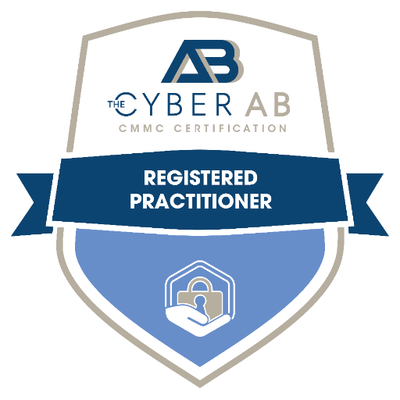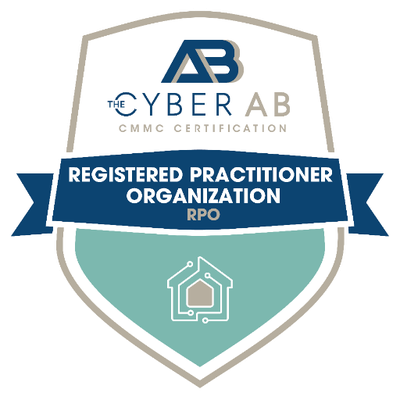Small businesses face the same cyber threats as large corporations, yet they often lack the resources to implement robust cybersecurity measures. With increasing regulatory pressures, small businesses must not only protect their sensitive data but also ensure they are compliant with industry standards. The challenge is clear: how can small businesses achieve cybersecurity compliance without breaking the bank? Amira Armond, Vice Chair of the C3PAO Stakeholder Forum and President of Kieri Solutions LLC sheds light on the barriers small businesses face when it comes to cybersecurity compliance, offers practical tips for cost-effective solutions, and discusses the importance of building a strong cybersecurity culture.
The Cybersecurity Compliance Struggle for Small Businesses
Amira highlights that the primary challenge for small businesses is the lack of institutional knowledge regarding cybersecurity and regulatory compliance. Often, the knowledge gap means that businesses don’t even know where to begin. “When small businesses start thinking about cybersecurity compliance, they quickly realize how overwhelming it can be,” says Amira. “The technical language, the controls, the regulations—it can be daunting, especially when you don’t have a dedicated IT or security team.”
This lack of understanding can make the compliance process feel like an insurmountable task. For small businesses, the risk of failing a cybersecurity assessment or failing to meet regulations like the Cybersecurity Maturity Model Certification (CMMC) or National Institute of Standards and Technology (NIST) standards can be high.
Practical Steps for Achieving Compliance on a Budget
While the task may seem daunting, Amira suggests that small businesses don’t need to overextend their budgets to achieve compliance. “There are low-cost, practical steps that can be implemented to improve your security posture and meet compliance requirements,” she explains.
- Understand the Basics: Inventory and Documentation
One of the first steps Amira advises is to create a comprehensive inventory of all hardware and software within the organization. This step is essential for understanding where potential vulnerabilities may exist. Many small businesses overlook this, but it’s one of the core principles of both CMMC and NIST frameworks. - Leverage Existing Tools
Small businesses don’t always need to buy expensive tools or software to meet compliance standards. Many commonly used tools—such as antivirus programs, firewalls, and password management systems—can serve as the foundation for compliance. Amira emphasizes the importance of leveraging these existing tools and ensuring they are properly configured and maintained. - Outsource to Experts When Necessary
Small businesses can’t do it all alone, and outsourcing to cybersecurity professionals can be a cost-effective way to address gaps in expertise. “It may seem like a big expense, but when you factor in the potential costs of a breach or failing an audit, outsourcing cybersecurity assessments and consulting can be a wise investment,” says Amira. - Train Employees Regularly
One of the most cost-effective measures businesses can take is to implement regular cybersecurity training for all employees. According to Amira, the human element is often the weakest link in security, and training employees on identifying phishing attacks, creating strong passwords, and maintaining best practices is one of the best defenses against cyber threats. - Adopt a Risk-Based Approach
Amira suggests that small businesses take a risk-based approach to cybersecurity compliance. Instead of focusing on meeting every requirement perfectly, businesses should prioritize their most critical assets—whether that’s sensitive customer data, intellectual property, or proprietary systems—and apply the necessary controls to protect those assets. This approach allows businesses to meet compliance requirements efficiently without stretching their resources too thin. - Building a Cybersecurity Culture
In addition to these practical steps, Amira stresses the importance of fostering a cybersecurity culture within the organization. “Cybersecurity isn’t just about tools or technologies; it’s about mindset and behavior,” she explains. “It’s about creating an environment where everyone understands that security is everyone’s responsibility.”
She recommends that business owners regularly discuss cybersecurity at team meetings, share updates on current risks, and encourage employees to be proactive about security issues. By integrating cybersecurity into the company’s overall culture, small businesses can create a safer and more compliant environment without incurring significant additional costs.
Regulatory Pressures: The Cost of Non-Compliance
Amira also touches on the regulatory pressures that small businesses face, especially when it comes to contracts with the Department of Defense or other federal agencies. “Failing a cybersecurity assessment can cost you the ability to work with certain clients or even jeopardize existing contracts,” she warns.
For small businesses, failing to meet compliance requirements can result in lost opportunities, as many government contracts require compliance with CMMC or NIST standards. As Amira puts it, “It’s not just about keeping your data safe. It’s about staying competitive and ensuring your business can continue to operate and grow.” Achieving cybersecurity compliance on a small budget is challenging, but it’s not impossible. By understanding the basics, leveraging existing resources, outsourcing where needed, and fostering a cybersecurity culture, small businesses can meet regulatory requirements and protect themselves from cyber threats.
As Amira emphasizes, “Compliance isn’t a destination; it’s a journey.” Small businesses that start taking incremental steps today will be well-positioned to handle the evolving cybersecurity landscape and remain competitive in their industries. For businesses struggling with the complexities of cybersecurity compliance, Amira’s advice is clear: “Don’t try to do everything at once. Start with the basics, and build your way up over time. You don’t need to be perfect; you just need to be secure.”
By following these steps, small businesses can not only achieve compliance but also create a secure foundation that will allow them to thrive in the increasingly digital world.
—Simplifying Cybersecurity Compliance: A Guide for CFOs—
Important Links
- Amira Armond – LinkedIn
- CMMCAudit.org
- Kieri Solutions
About Amira Armond
 Amira Armond is the vice chair of the C3PAO Stakeholder Forum, the president of Kieri Solutions (an authorized CMMC assessment organization), and the chief editor for CMMCaudit.org. Kieri Solutions is noteworthy for passing their C3PAO CMMC Level 2 assessment with an enterprise system that is being used for real work, with a part-time IT department, following plain-language policies and procedures suitable for small business. Amira Armond is a CMMC Assessor and Instructor and is an active speaker and blogger for cybersecurity and compliance. Her company provides assessment, consulting, and training on NIST SP 800-171, CMMC, and secure systems architecture to clients ranging from Fortune 50 companies to small defense contractors.
Amira Armond is the vice chair of the C3PAO Stakeholder Forum, the president of Kieri Solutions (an authorized CMMC assessment organization), and the chief editor for CMMCaudit.org. Kieri Solutions is noteworthy for passing their C3PAO CMMC Level 2 assessment with an enterprise system that is being used for real work, with a part-time IT department, following plain-language policies and procedures suitable for small business. Amira Armond is a CMMC Assessor and Instructor and is an active speaker and blogger for cybersecurity and compliance. Her company provides assessment, consulting, and training on NIST SP 800-171, CMMC, and secure systems architecture to clients ranging from Fortune 50 companies to small defense contractors.




